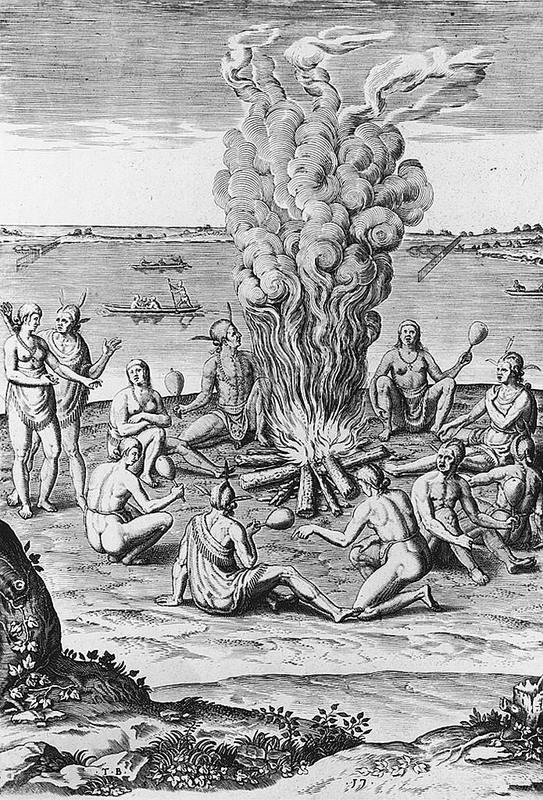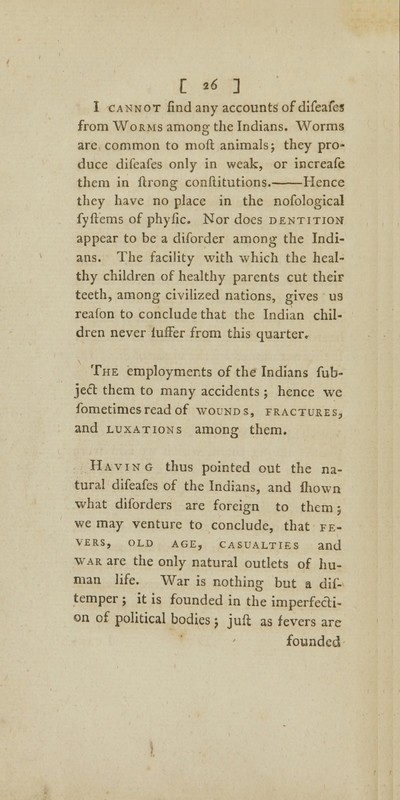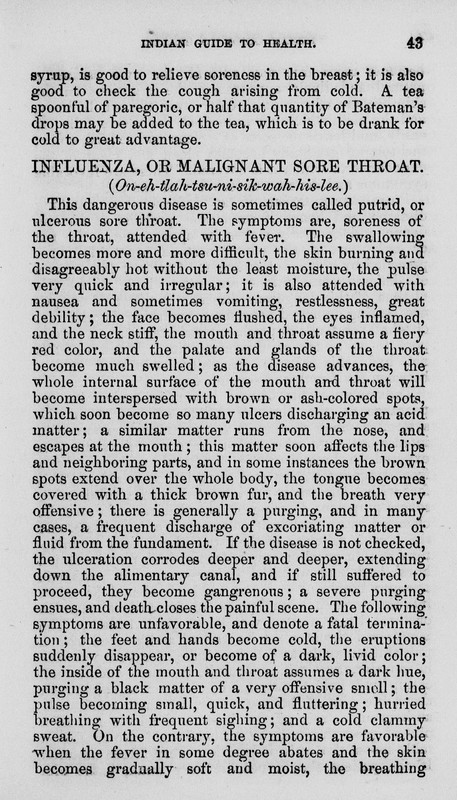Native Medicine and Healing prior to the Reservation Era
This engraving, based on the original drawings by English artist John White, depicts a ceremony around a council fire among Algonquian Indians encountered by colonists in North Carolina in the early 16th century. Because of language and cultural barriers and the prejudices early European visitors had against Native Americans, such documents are not reliable sources to understand traditional healing and religious practices before colonization.
Most Indigenous nations highly valued communal ritual practices as critical to maintaining a healthy and balanced relationship with the various forces animating the universe. These practices were transmitted orally through generations and each community had special "experts," the shamans or "medicine men" (or women) who were thought to have a special communication with this spiritual realm. Music, dance, the smoking of tobacco as a sacred and medicinal substance, and other rituals were therefore critical to the collective health of a tribe, and "health" was understood in a holistic manner (spiritual, physical, moral).
These traits were deeply altered by colonialism and the forced removal to reservations in the 19th century represented another obstacle to preserving such ancestral practices.
Benjamin Rush was a famous physician in the late 1700s. He made this speech in an attempt to inform the gathered audience about what he knew of the medicinal practices of the Native Americans. However, he consistently puts down the Native American’s methods of healing because he does not fully understand or appreciate their value. This is an important primary source because it exemplifies many of the issues that Native Americans have been facing for centuries. Rush did not understand how the Native Americans went about practicing medicine, so he wrote their ideas off as being Ludacris and ineffective. A specific example of this would be on page 33 of the speech as Rush basically says that Native remedies to poisonous plants are not valid because many things once thought to be poisonous are not. This was obviously an ignorant statement made by Rush because it shows how he is making hasty generalizations about Native medicine. This shows how the Europeans at this time were not particularly interested in forming long lasting and healthy relationships with the Native Americans.
This book, written by Richard Foreman, details the health practices in the Cherokee tribe. This account is positive as it attempts to make known the different practices of the Native Americans. This book is more of a comparison of European and Native methods as compared to the other book which was just more of criticism. This book is important because it is an example of a more positive and objective view of Native American medicine. Despite the factual inaccuracies in the book, it is still useful today because it shows a bridging of the gap between Native Americans and Europeans through medicine. Without accounts such as this, historians today would not be knowledgeable about the different types of Native health practices. For example, on page 44, for example Foreman criticizes the European procedure of blood letting and recommends the Native process of rest and eating hot food to cure the flu. This shows how the Natives on the reservations could use the land around them to remedy ailments better than the Americans at the time could.



